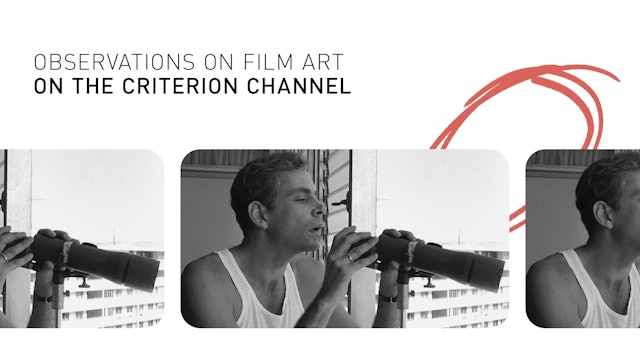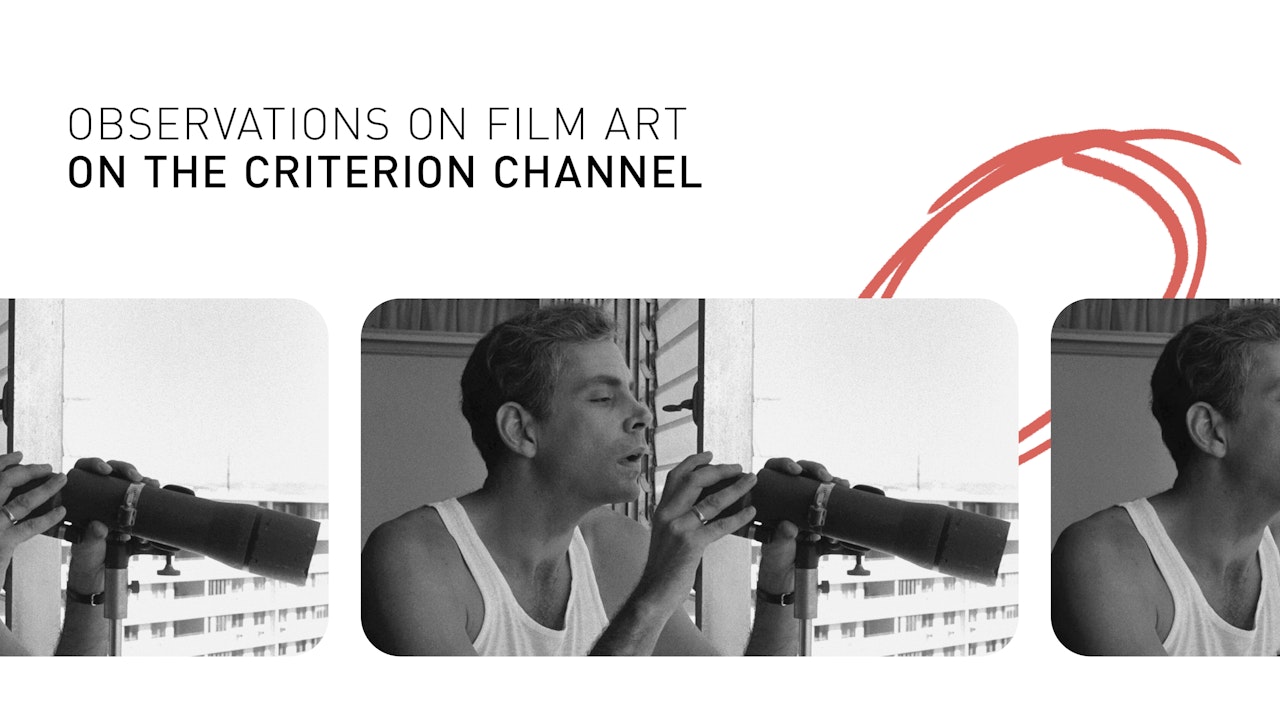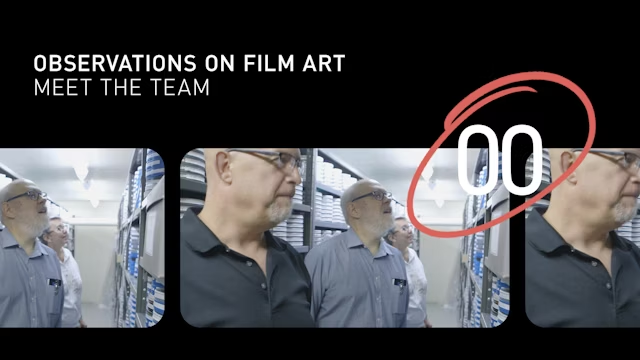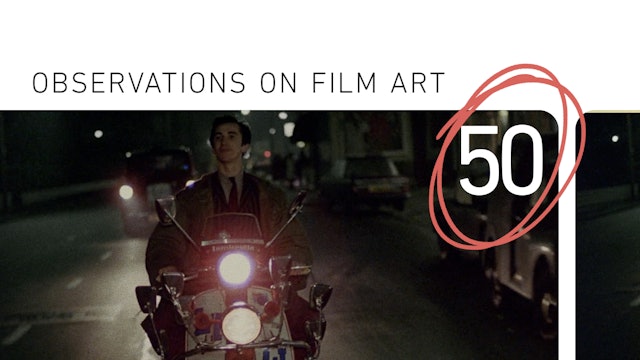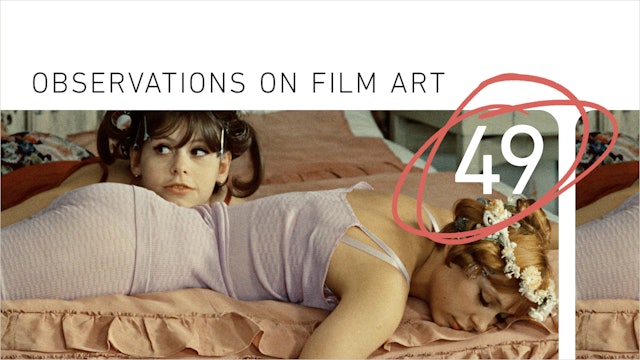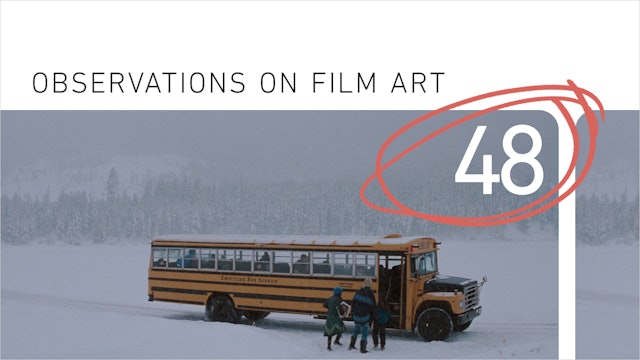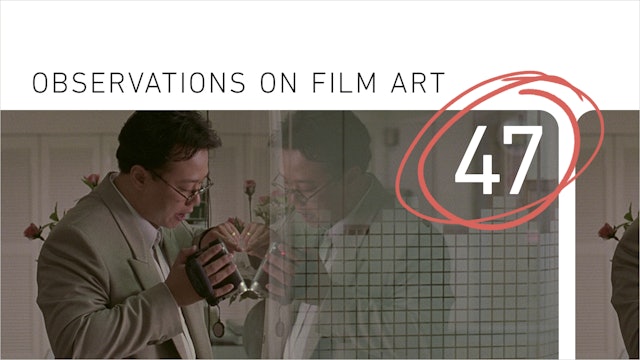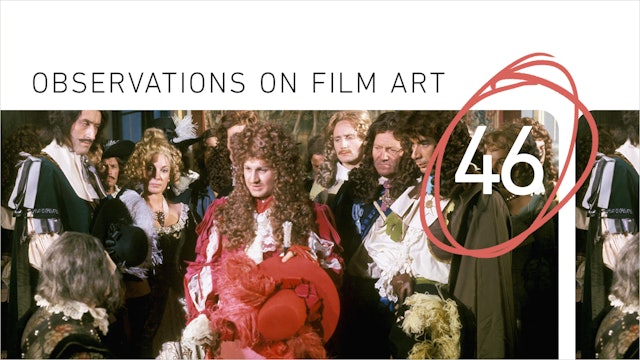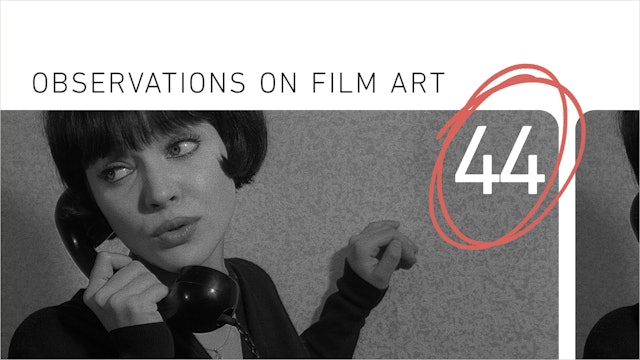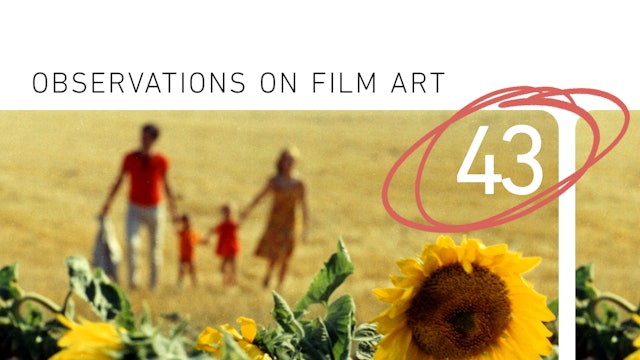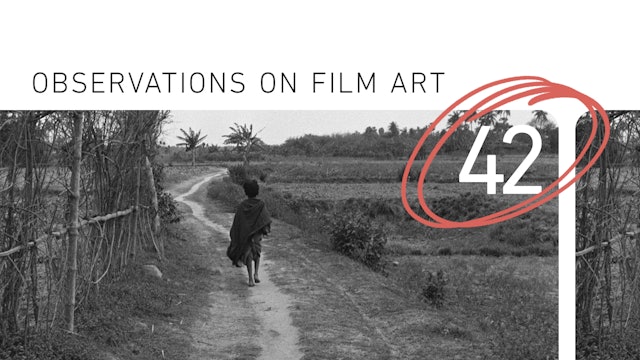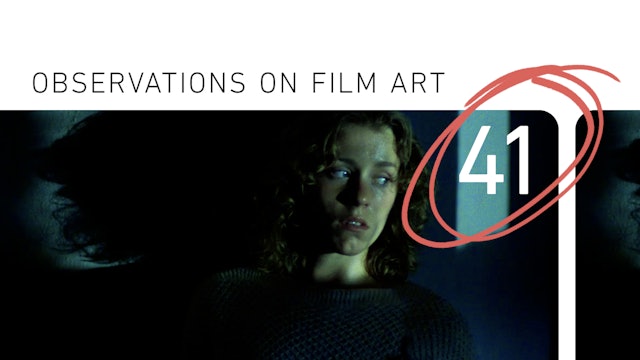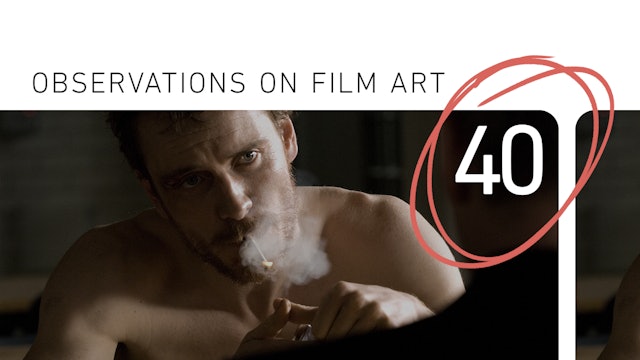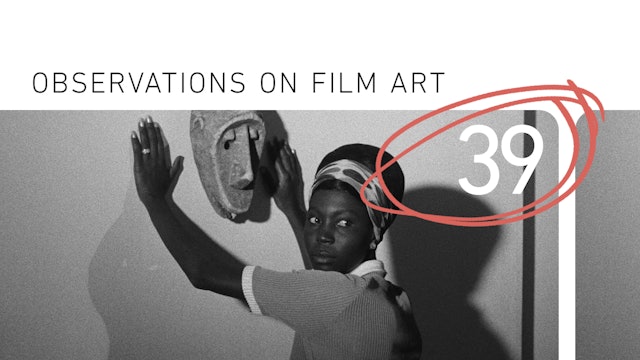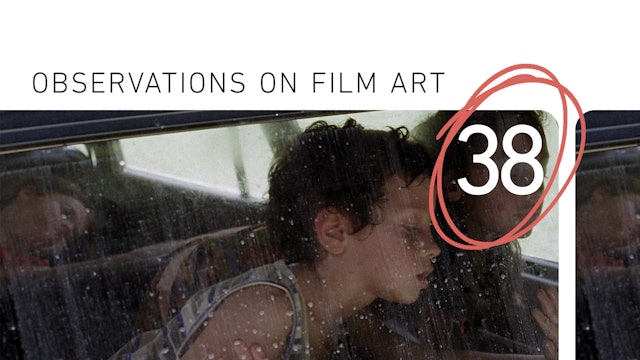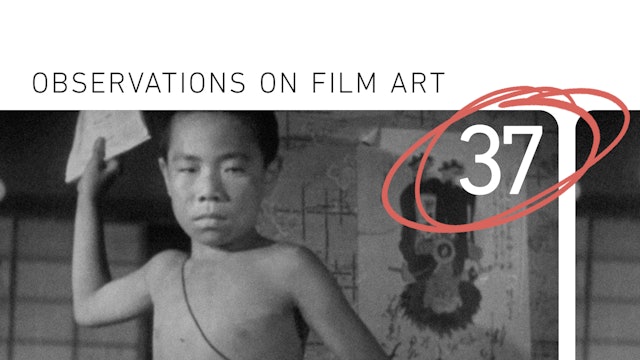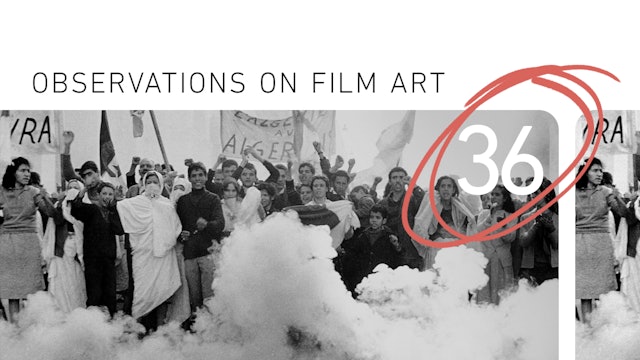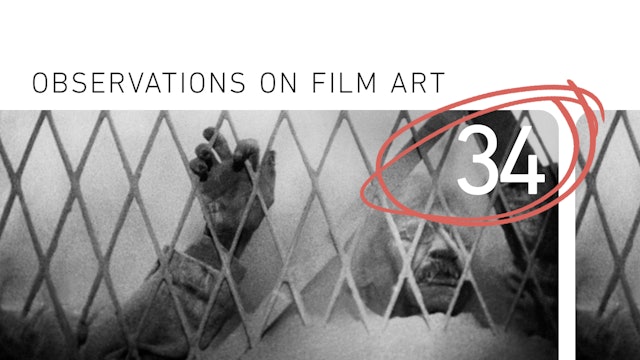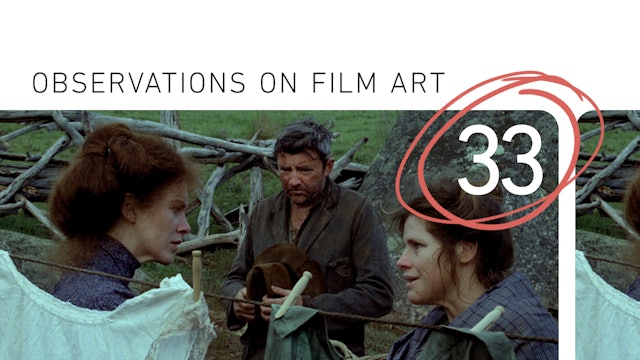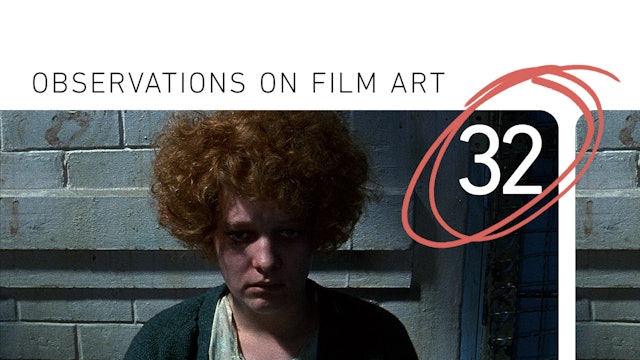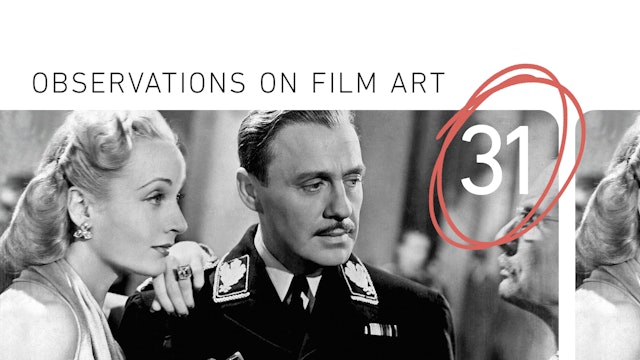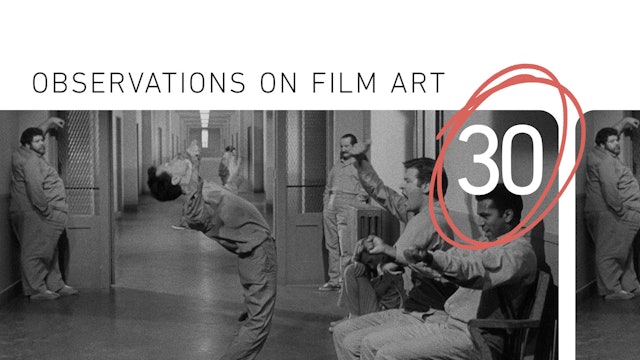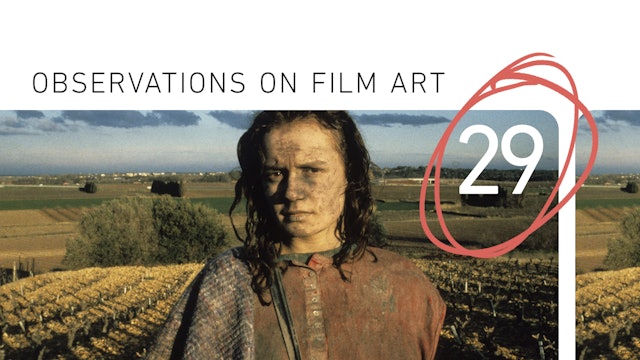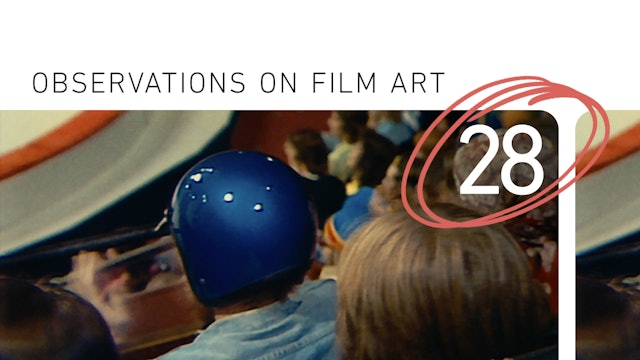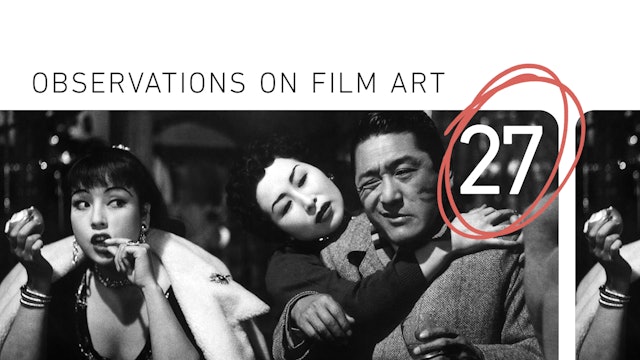Observations on Film Art
-
Meet the Team
David Bordwell, Kristin Thompson, and Jeff Smith are leading film scholars and the authors of the definitive cinema studies textbook, “Film Art.” This short documentary introduces you to the three of them in Madison, Wisconsin‚ both on campus at the University of Wisconsin and in Thompson and Bor...
-
Rock and Roll Style: Costumes and Props in QUADROPHENIA
2 items
Driven by the music of the Who’s classic rock opera from which it takes its name, Franc Roddam’s QUADROPHENIA is an exhilarating expression of youthful rebellion and a quintessential snapshot of the defiant, drug-fueled mod subculture of early-1960s London. In this edition of Observations on Film...
-
Motifs of Destruction in DAISIES
1 season
With her radically anarchic Czechoslovak New Wave landmark DAISIES, director Věra Chytilová set out, in her own words, “to make a film that is aesthetically pleasing and interesting, yet [which] is an image of destruction,” one in which “the idea of ‘destruction’ is present in everything, in ever...
-
Associative Editing in THE SWEET HEREAFTER
1 season
Adapted from Russell Banks’s novel about a small town reckoning with trauma in the wake of a tragic school-bus accident, Atom Egoyan’s THE SWEET HEREAFTER is a profound meditation on grief and loss that manages to find compassion and hope in the bleakest of circumstances. In this edition of Obser...
-
Reflections in and on YI YI
1 season
One of the first masterworks of the twenty-first century, Edward Yang’s YI YI is an at once epic and intimate portrait of a year in the life of a Taiwanese family. It is also, as Professor Jeff Smith argues in this edition of Observations on Film Art, a valentine to the transcendent possibilities...
-
Beyond the Costume Picture: THE TAKING OF POWER BY LOUIS XIV
1 season
With THE TAKING OF POWER BY LOUIS XIV, neorealist pioneer Roberto Rossellini created the first of the fascinating, often overlooked historical dramas that would define his late career—and reinvented the costume picture in the process. In this edition of Observations on Film Art, Professor Kristin...
-
Aspect Ratio in VIVRE SA VIE
1 season
Observations on Film Art No. 44
One of the peaks of Jean-Luc Godard’s extraordinary 1960s creative run, VIVRE SA VIE finds the filmmaker combining brilliant visual design with a tragic character study of a young woman (Anna Karina) on a downward spiral. In this edition of Observations on Film Ar...
-
Flash Cuts and Long Takes in LE BONHEUR
1 season
Observations on Film Art No. 43
One of the most provocative films by the great Agnès Varda, LE BONHEUR interrogates our ideals of marriage, fidelity, and happiness through the sun-dappled tale of a young husband and father (Jean-Claude Drouot) who begins an affair with an attractive postal worke...
-
Paths and Roads in PATHER PANCHALI
1 season
Observations on Film Art No. 42
With his extraordinary debut feature, PATHER PANCHALI, Satyajit Ray introduced the world to his poetic, humanist vision and to the indelible story of Apu, the young Bengali boy whose odyssey he would trace over two subsequent films. In this edition of Observations...
-
The Viewer Who Knew Just Enough: Point of View in BLOOD SIMPLE
1 season
Observations on Film Art No. 41
With their razor-sharp debut BLOOD SIMPLE, Joel and Ethan Coen introduced the world to their striking sensibility and redefined film noir for a new generation. In this edition of Observations on Film Art, Professor David Bordwell explores how the brothers employ a...
-
Telling Details in Steve McQueen’s HUNGER
1 season
Observations on Film Art No. 40
In his stunning feature debut, Steve McQueen (SMALL AXE, 12 YEARS A SLAVE) used minimal dialogue and vivid imagery to tell the harrowing true story of Irish Republican Army member and political prisoner Bobby Sands’s hunger strike against the British state. In thi...
-
Language and Power in BLACK GIRL
1 season
Observations on Film Art No. 39
In his watershed feature debut BLACK GIRL, master director Ousmane Sembène offers a searing critique of colonialism’s legacy via the story of Diouana, a young Senegalese woman whose new life in France working for a white family gradually reveals itself to be a tra...
-
Visual Strategies in LA CIÉNAGA
1 season
Observations on Film Art No. 38
From the very first shot of her very first feature, LA CIÉNAGA, Argentine auteur Lucrecia Martel laid claim to a distinctive, defiantly strange cinematic syntax unlike any other. In this edition of Observations on Film Art, Professor Kristin Thompson examines the ...
-
Ozu’s Space Adventures: Editing in PASSING FANCY
1 season
Observations on Film Art No. 37
One of the last Japanese directors to make the transition to sound, Yasujiro Ozu continued making silent pictures until the midthirties. His lovely 1933 domestic drama PASSING FANCY is a gently humorous take on one of his signature themes: the relationship between...
-
Musical Motifs in THE BATTLE OF ALGIERS
1 season
Observations on Film Art No. 36
Ennio Morricone is perhaps the preeminent film composer of the last half century, an enormously influential artist whose iconic melodies and imaginative orchestrations grace some of the greatest films ever made. In this edition of Observations on Film Art, Profess...
-
In the Service of Horror—The Lyrical Cinematography of PICNIC AT HANGING ROCK
1 season
Observations on Film Art No. 35
Though its premise is not far removed from that of a straightforward horror movie, Peter Weir’s Australian New Wave classic PICNIC AT HANGING ROCK forgoes conventional shocks in favor of an eerie, otherworldly languor that’s closer to the moody atmospherics of an ...
-
VAMPYR: The Genre Film as Experimental Film
1 season
Observations on Film Art No. 34
Carl Theodor Dreyer’s haunting 1932 masterpiece VAMPYR has long occupied a singular place in film history, resting somewhere at the intersection of horror, avant-garde cinema, and waking nightmare. In this episode of Observations on Film Art, Professor David Bordw...
-
Feminist Mise-en-scène in MY BRILLIANT CAREER
1 season
Observations on Film Art No. 33
Adapted from the beloved novel by Miles Franklin, Gillian Armstrong’s Australian New Wave classic MY BRILLIANT CAREER depicts the world of a rebellious young woman who dreams of becoming a writer while growing up in the rugged countryside of nineteenth-century Aus...
-
Withholding and Revealing in AN ANGEL AT MY TABLE
1 season
Observations on Film Art No. 32
Jane Campion came to international attention with her acclaimed sophomore feature AN ANGEL AT MY TABLE, a luminous adaptation of the memoirs of Janet Frame, tracing her journey from her childhood in New Zealand to her time in a mental hospital to her emergence as ...
-
Comedy, Suspense, and Three-Point Lighting in TO BE OR NOT TO BE
1 season
Observations on Film Art No. 31
In his audacious political satire TO BE OR NOT TO BE, Ernst Lubitsch pulls off the seemingly impossible by using a deadly serious, then-unfolding crisis—the Nazi occupation of Poland—as the backdrop for a hilarious and subversive screwball comedy. In this episod...
-
The Long Take in SHOCK CORRIDOR
1 season
Observations on Film Art No. 30
Pitched at screaming, full-throttle intensity, Samuel Fuller’s SHOCK CORRIDOR plunges headlong into the delirium of a psych ward, finding in it a daring metaphor for the anxieties consuming early-sixties America, from racism and xenophobia to sexual politics and...
-
Plotting in VAGABOND
1 season
Observations on Film Art No. 29
VAGABOND, Agnès Varda’s stunning look at life on the margins, tells the story of a defiant young drifter named Mona (played by the remarkable Sandrine Bonnaire) as she embarks on a self-destructive journey in search of the ultimate freedom. In this episode of Ob...
-
Spontaneous Play in PARADE
1 season
Observations on Film Art No. 28
Upon its release in 1974, Jacques Tati’s final film, PARADE—a seemingly off-the-cuff documentary in which the director acts as ringleader of a colorful circus—was viewed by many as a departure from the intricately choreographed comedies for which he was renowned...
-
Games of Vision in STREET OF SHAME
1 season
Observations on Film Art No. 27
Master director Kenji Mizoguchi’s final film, STREET OF SHAME—a wrenching portrait of women working in a brothel in Tokyo’s red-light district—employs intricate mise-en-scène to create an almost hypnotic relationship between viewer and image. In this episode of Ob...

